Lilacs in the Spring ** (1954, Errol Flynn, Anna Neagle, David Farrar) – Classic Movie Review 8033
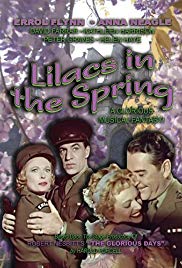
Producer-director Herbert Wilcox’s 1954 musical Lilacs in the Spring [Let’s Make Up] is an odd movie that veers from drama, comedy and romance towards fantasy. His wife Anna Neagle stars as young entertainer Carole Beaumont, who is knocked unconscious during the 1943 German Blitz attack on London and dreams herself to be Nell Gwyn, Queen Victoria and her own mother, while attempting to choose between the men she loves for her husband: Errol Flynn as John ‘Beau’ Beaumont and David Farrar as actor-producer Charles King / King Charles II.
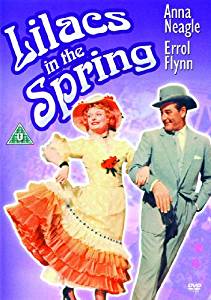
Lilacs in the Spring is based on the stage musical play The Glorious Days by Harold Purcell and Robert Nesbitt (music by Harry Parr Davies), a big success for Neagle, running for two years and 467 performances. Its theatrical background is apparent, and it gains little in its big screen transfer, though Neagle is most notable in her costume-changing role. The men’s roles are a bit wet, though, and there is not much that Flynn, Farrar and Peter Graves (as Albert Gutman / Prince Albert) can do to enliven them.
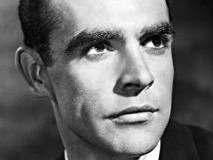
It is the film debut of Sean Connery, aged 24, in an uncredited undetermined role, though he made his film debut proper as Spike in a small part in director Montgomery Tully’s 1957 British black and white B-movie crime melodrama No Road Back.
Also in the cast are Kathleen Harrison, Helen Haye, Hetty King, Alan Gifford, Gillian Harrison, George Margo, Scott Sanders, Alma Taylor, Sam Kydd, Jennifer Mitchell, George Benson, Stephen Boyd, Victor Harrington and Gerard Heinz.
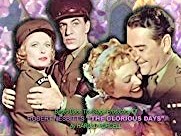
Lilacs in the Spring [Let’s Make Up in the US] is directed by Herbert Wilcox, runs 94 minutes, is made by Herbert Wilcox Productions (Everest Pictures), is released by Republic (UK) and United Artists (US), is written by Miles Malleson, based on the play The Glorious Days by Harold Purcell and Robert Nesbitt, is shot in Eastmancolor/ Trucolor by Max Greene, is produced by Herbert Wilcox, is scored by Robert Farnon, and is designed by William C Andrews. The prologue is in black and white. It was made at Elstree Studios, Borehamwood, Hertfordshire, England, in July 1954.
Neagle is revisiting two of her famous roles. She previously played Nell Gwyn in Nell Gwyn (1934) and Queen Victoria in Victoria the Great (1937) and Sixty Glorious Years [Queen of Destiny] (1938).
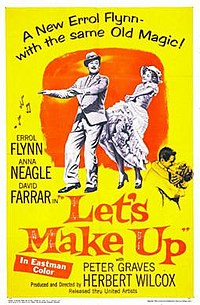
It is the first of two movies Neagle and Flynn made together, followed by the 1955 King’s Rhapsody. Neagle said: ‘He has made so many friends on this picture with his sense of fun and his conscientiousness and he has been enormously co-operative.’
Flynn, who uses his own singing voice, agreed to make the film to pay off his debts on his abandoned William Tell film.
Neagle and Wilcox guaranteed a loan of ₤75,000 to make the film and, when it was not a success at the box office, that contributed to Wilcox’s bankruptcy.
© Derek Winnert 2019 Classic Movie Review 8033
Check out more reviews on http://derekwinnert.com

